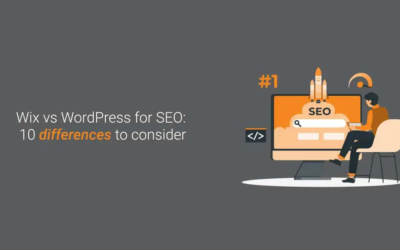You may host the best services or offer the highest quality products, but your website’s popularity will dictate your business’s success. And this reach is dependent on your SEO practices. SEO can make or break your business’s reach. A WebFX survey reported that 85% of retailers trust proper SEO to get new customers.
HubSpot mentioned in a post that 75% of buyers do not scroll past the 1st page of Google results. Thus, ranking on the 1st page is paramount to your popularity. Marketers trust elaborate SEO strategies are highly effective to drive results. But there are strategies where experts showcase present divided opinions.
Most relevant of all is the infamous Subdomain or Subdirectory debate. The argument lies behind this: Where do you add new website content? And which is better for your SEO? Your decision on where you hold your new content describes the structure of your website and how it will be managed.
To determine whether to hold your web content on a subdomain or subdirectory, it’s crucial for you to understand what they are. While both are a part of your URL, they differ in their characteristics.
What is a subdomain?
Subdomains are closely related to your main domain, but they exist under a different tangent. The partition often runs as a separate entity and may even operate under an outside content management system.
These are helpful for individually hosting different parts of your website including blog posts, smaller eCommerce stores, side internationalized pages, and so on. When you look at a URL, the subdomain will be right before the main domain name.
Subdomains sit outside the root domain to better organize your website structure and UX. They distinguish specific content types and avoid getting them mixed up with the root domain.
What is a subdirectory?
Subdirectories come after the domain name in a URL. They exist under the same server as the main domain and host files more casually. Unlike subdomains, subdirectories are added as another page on the website.
Subdirectories are often used by smaller sites or even larger websites for their product and service pages.
SEO Challenge: Subdomain vs. Subdirectory
The difference comes from the fact that subdomains exist as separate entities, while the subdirectories exist as part of the main domain. While experts generally divided between the two options, the common denominator is the ‘it’s subjective’ lens.
Larger websites, with entirely separate and extensive sections, should make more use of subdomains. While smaller sites with minor subdivisions will work better with subdirectories.
However, besides the expanse of your website, other factors like user experience and functionality affect the decision as well. Moreover, there is a dilemma on which is better for SEO rankings.
Why the debate?
Subdomains and subdirectories essentially describe the structure of your website. And this factor significantly impacts the website’s SEO and performance. While some SEO experts believe that Google ranks subdomains separately under its ranking algorithms, others seem to disagree.
The argument above implies that subdomains will be treated as a standalone website, requiring an SEO strategy and server of their own. Consequently, SEO experts like Rand Fishkin advise against using subdomains as they confuse the algorithm and undermine your SEO efforts.
Google’s Suggestion
John Mueller, A senior Trends Analyst at Google, explained in a YouTube video that the algorithm is equally open to subdomains or subdirectories. The expert’s suggestion was to use the option that best suits your website in the long term, without jeopardizing the structure.
Conclusion: Which is better for you?
SEO experts shake hands on the fact that all SEO strategies boil down to creating a user-friendly website. Therefore, the subdomains vs subdirectories debate can be settled accordingly.
To sum it all up, your website should opt for the option best uplifts the user experience. If you have a complex set of extensive sections that have individual relevance, subdomains are the better option. On the other hand, subdirectories are better for smaller sections that can exist as a part of your website.





0 Comments